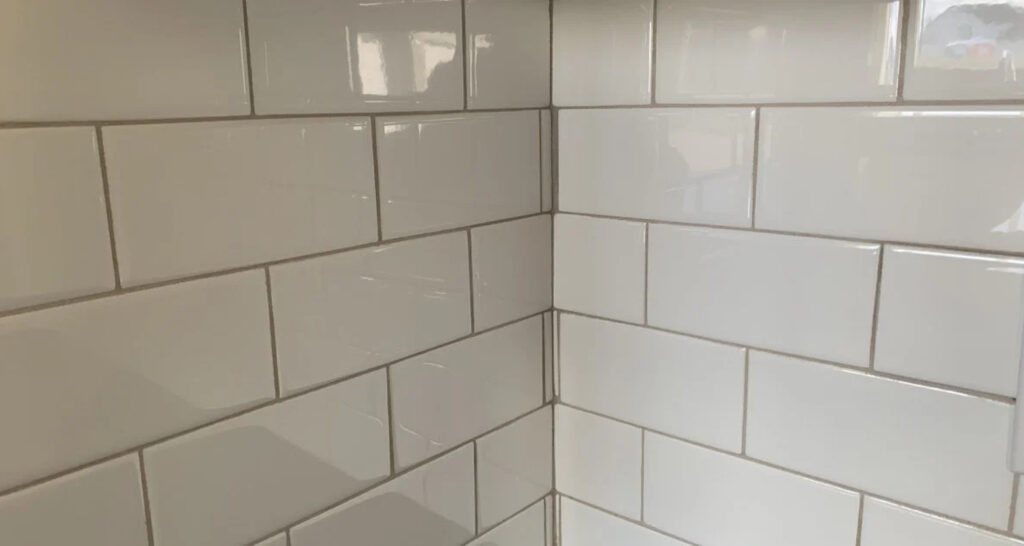Tiling should be your major concern when working on a project, whether you’re constructing a new house or just hoping to keep your home’s outside looking good. Oftentimes, when tiling is done, people forget to keep an eye out, which leads to a variety of minor to big problems that could harm the appearance of your home. To prevent future tiling issues, each tile—whether it be on the floor, the walls, or even the bathroom tiles—needs to receive equal attention when it is installed.
Loose Tiles

The most prevalent tiling problem is loose tiles. The tiles frequently get loose after installation. As a result, when checked, the portions of the floors and walls produce a hollow sound. This occurs when problems with control joints or soft joints arise during tile installation, such as when thin-set is used. After a few months or years, a loose tile develops as a result of the temperature-related expansion and contraction of the concrete slabs underneath.
Considering a remedy for the loose tiles, utilizing a good thin-set while installing is the best way to avoid it. In addition, a high-quality foundation is necessary so that the concrete beneath the tiles may breathe properly in any climate. When installing tiles, it’s best to use a high-quality underlayment membrane to prevent tile cracks.
Poor workmanship

Most of the time when the tiling is carried out, the owners leave the entire responsibility to the workman. Hence, they avoid inspecting the job also. Checking the grout lines, the space between the tiles, etc. should be carried out once the tiling job is over. But most of the owners don’t do so and hence, end up with tiling issues.
When carrying out the tiling job, make sure you take an inspection of the tiles from a distance of nearly 6 feet as per ANSI standards. This is highly recommended if you have hired a contractor for the tiling process. If anything is found suspicious regarding the tiling job, inform the workman about it quickly. This would help them take the necessary steps for repairing the damage or making changes. When such an inspection is carried out several times, it would help in avoiding any kind of tile issues.
Cracked Tile

Cracked tile or grout is a common tiling issue due to tile cracking or loose tile after the installation. When the installation is not carried out properly, it ends up on an uneven floor that wreaks havoc on the entire installation project. Again, the cracked tile ends up with a damaged look.
The best way to prevent tile cracking, as per the experts from Lavish Ceramics is using steel reinforcement bars while using the concrete mix. Adding some fiber is also effective. Again, you can also use crack isolation membranes prior to placing the tiles. This would be helpful in certain movements at the time of temperature changes. It would help in the expansion and contraction of the tiles during a stabilized temperature without damaging the tiles. Another secret to avoiding tile cracking is to mix grout and pack it tightly in the tile gaps as leaving gaps in the tiles can allow the water to seep inside, resulting in cracks.
Mold Growth

The wall tiles in bathrooms frequently have this feature. Since bathrooms and showers tend to have higher moisture levels than other rooms, mold can be seen growing on tiles. Mold can easily grow from the tiny crevices between two tiles and spread out from there since the grouts are porous. But an immediate solution is required to stop the mold from growing because the moisture in the bathrooms and showers will undoubtedly increase.
The specialists at Lavish Ceramics advise mixing baking soda, about a half cup, and a few drops of water as one of the finest preventative methods. using this mixture on the tiles and grout. On the walls and grout, let it sit for a few minutes. Use a scrub brush to clean. Use water to clean. This makes it simple to clear off the mold on the tiles and restore their appearance.
Grout

After installing tiles, especially bathroom tiles, practically everyone encounters another frequent problem: grout. But don’t panic, there are many simple techniques to remove grout for a spotless bathroom.
Applying some hot water to the grout and removing the debris from the surface or tiles is the first step in preventing the growth of grout in the bathroom or anyplace else in the house. Hot water will make it easier to remove the grout from the tiles. However, if the grout accumulation is severe, you can also use potent cleansers to remove the grout and other stains from the tiles, such as chlorine bleach, alkaline, oxygen bleach, etc. The undesired dirt could be removed off the tiles by using a scrubber or even a little brush. It is also advised to treat the grout with an efficient sealant once it has been cleaned to prevent future buildup or stains of any kind.
The kind and degree of the problem will determine how to fix the installation problems with polished glazed vitrified tiles. One can easily handle the small problems at home on their own. Again, frequent maintenance and cleaning of the tiles would prevent further deterioration of any kind. If the damage or tiling issue is severe, however, be sure to call a professional or contractor from Antica Ceramica who can identify the problem and address its core causes. So, are you prepared to address the tile problems in your home?








